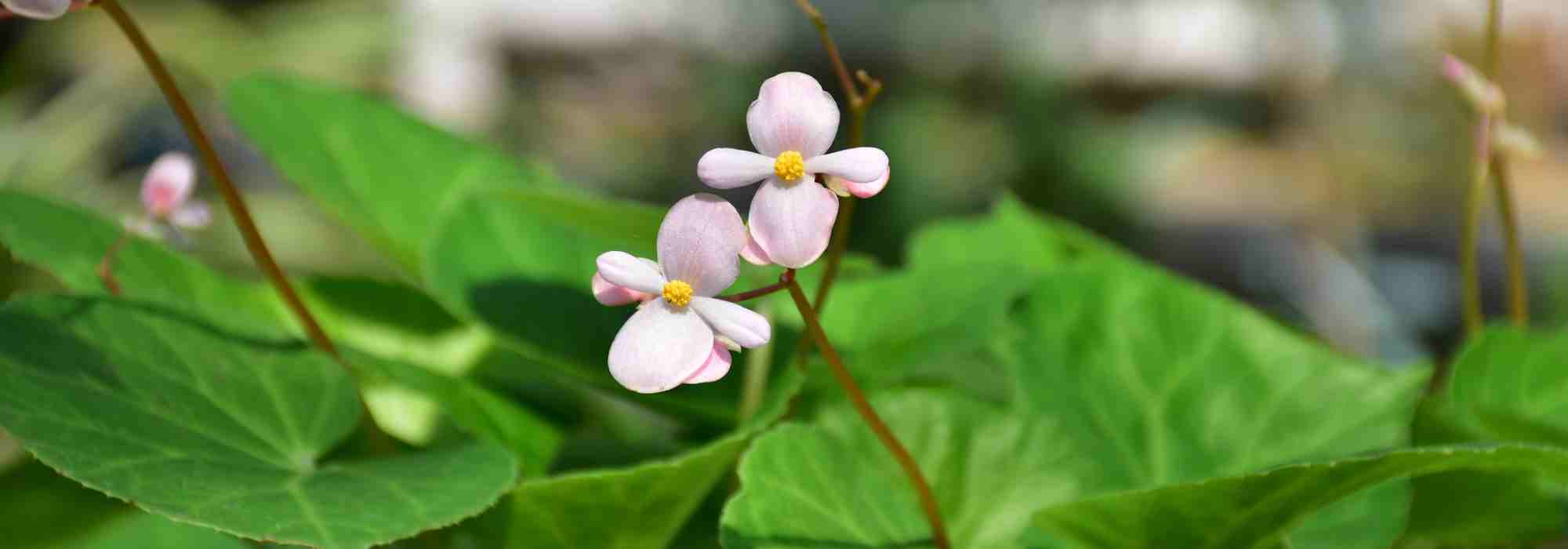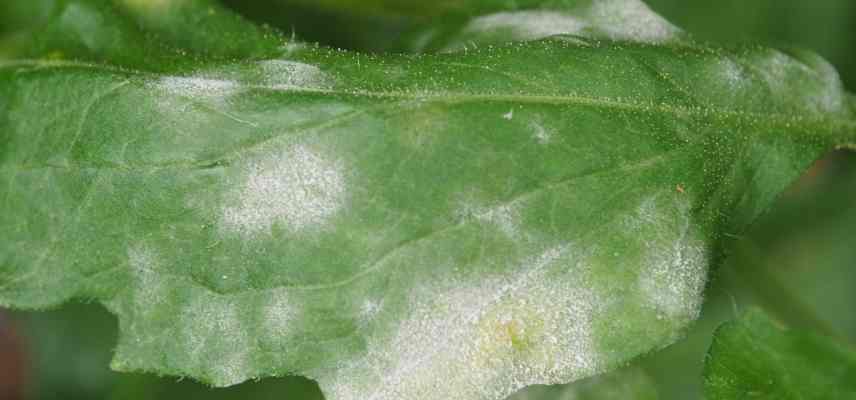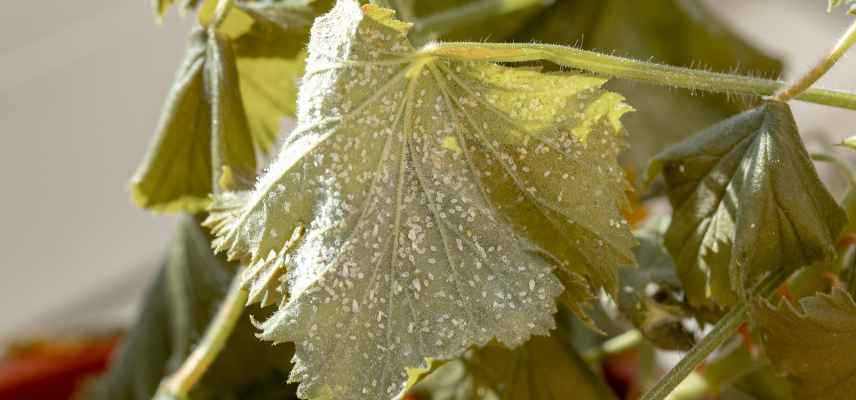
Diseases and Pests of Begonias
Identification, Prevention and Natural Solutions
Contents
Begonias reward us with a long summer flowering, in bright and varied shades. While many begonias are frost-tender and therefore grown as annuals or houseplants in our climate, there are also some hardy perennial begonias.
All are relatively easy to grow and effortlessly add a splash of colour to the garden, terrace or balcony. However, begonias can be affected by certain diseases or parasitic pests, which may reduce their flowering. Let’s explore the most common issues and the preventive measures to adopt. We’ll also look at natural treatments to keep your begonias looking their best.
Fungal diseases of begonias
Identification
These are the most common diseases in the garden. They are caused by fungi, which generally thrive in warm and humid conditions. They can sometimes appear as early as spring and last until autumn. They are quite contagious.
Among the fungal diseases that can affect begonias, powdery mildew is one of the most notable. Also known as ‘white mould’, this name refers to one of its most striking symptoms: the appearance of a floury, powdery coating on the leaves, stems, and flower buds. Late in the season, it won’t pose much of a problem for annual begonias. But if it develops too early, it will hinder photosynthesis and the overall health of the plant, which will eventually dry out prematurely.

Another common disease is botrytis, also known as ‘grey mould’. Naturally, the first visible symptom is the appearance of brown spots covered with a grey, dusty-looking fuzz. Affected flowers wilt or fail to open. Eventually, entire young plants become necrotic and die.
Downy mildew, a disease often associated with tomatoes, can also affect begonias. It is recognisable by the yellow spots that appear on the foliage. These later darken, leading to tissue necrosis.
Prevention and Solutions
A few simple measures can help prevent the development and spread of fungal diseases. There are, in fact, few effective curative treatments once the disease has taken hold.
- Avoid planting begonias in soil that has previously hosted fungal diseases. Fungal spores can survive in the soil for long periods.
- When planting, ensure adequate spacing between young plants to promote natural airflow. Leave at least 15 to 20 cm between each begonia and avoid overcrowding.
- When watering, avoid wetting the foliage. Additionally, apply an organic mulch around the base of your begonias to reduce water evaporation.
- Provide optimal growing conditions for your begonias. Most prefer partial to full shade, away from scorching sunlight. They thrive in soil rich in organic matter but well-drained. Heavy soil may encourage disease development and root rot. If this is the case, add drainage materials (gravel, river sand, clay balls, etc.) to improve soil structure.
- Regularly remove dead or damaged leaves to minimise the risk of fungal growth.
- Avoid over-fertilising, even for pot-grown plants. Excess fertiliser can weaken begonias, making them more susceptible to disease.
As a preventive measure, you can try plant-based tonics. Though their efficacy isn’t scientifically proven, some gardeners use them preventively (or even curatively) to combat fungal diseases. Nettle and horsetail tonics are believed to enhance plants’ natural resistance and have antifungal properties. If you’d like to make your own, check out our tutorials on how to make nettle tonic or horsetail tonic.
At the first sign of infection, immediately remove affected parts and dispose of them at a waste facility. Do not compost them—fungal spores may continue to develop. Clean cutting tools with alcohol to prevent cross-contamination between plants.
For further reading, explore our article All About Fungal Diseases.
Slugs and snails that attack begonias
Identification
You’re undoubtedly familiar with these greedy pests. Slugs and snails can cause significant damage to a young begonia plant, especially when it’s newly established. You’ll spot them by the nibbled leaves and flowers, as well as any slime trails nearby.
Prevention and Solutions
Nearly every gardener has their favourite method for dealing with slugs and snails. There isn’t really a perfect solution: it’s up to you to test what works best in your garden under your specific growing conditions.
You can choose between beer traps, ferramol-based pellets (suitable for organic gardening) or manual removal for lethal solutions.
If you simply want to deter snails and slugs from your begonias, opt for natural barriers made from ash, volcanic rock or crushed eggshells (apply in a thick layer and replenish frequently). You could also try planting repellent companion plants nearby, such as wormwood or tansy.
More broadly, encouraging biodiversity in your garden helps naturally regulate pest populations. The idea is to provide good habitats for predatory allies (toads, birds, hedgehogs…) who’ll help prevent infestations.
Here are some simple practices:
- Avoid chemical treatments which are non-selective and often polluting;
- Leave some wild areas or practice mosaic mowing to maintain natural shelters;
- Install nest boxes, feeders and water sources;
- Place insect hotels (especially in urban gardens).
For more tips, see our article Slugs: 7 effective and natural control methods.

Aphids and scale insects on begonias
Identification
Scale insects and aphids are both sap-sucking insects that feed on plant sap. Aphids can be green or black, winged or wingless. The most common scale insects found on begonias are the so-called “mealybugs”, which are indeed covered with a white cottony coating.
In small numbers, these parasitic insects do not necessarily pose a threat to begonias. However, when large colonies form, the plant will gradually lose vitality. Flower buds may become deformed, and leaves may curl in on themselves.
The presence of these small pests can also be detected by the appearance of black, soot-like deposits on the leaves, stems or flowers. This is sooty mould, a fungal disease that thrives on the sticky honeydew secreted by scale insects and aphids. It blocks the plant’s photosynthesis and can lead to its decline.
Ants scurrying back and forth may also be a tell-tale sign: they love feeding on honeydew and, in return, provide protection against predators for scale insects and aphids.

Prevention and Solutions
As soon as you notice the first colonies, remove them by hand using a cotton bud dipped in alcohol.
In case of a severe infestation, you can make your own natural insecticidal spray using black soap. To do this, dilute one to two tablespoons of pure black soap in a litre of lukewarm water. Pour the mixture into a spray bottle. Shake well, then spray onto affected areas. Repeat if necessary after about ten days.
For further reading, check out our articles Aphids: Identification and Treatment and Scale Insects: Identification and Treatment.
- Subscribe!
- Contents
































Comments